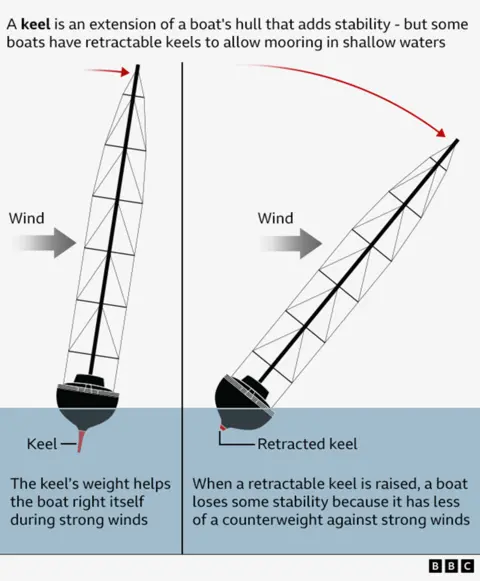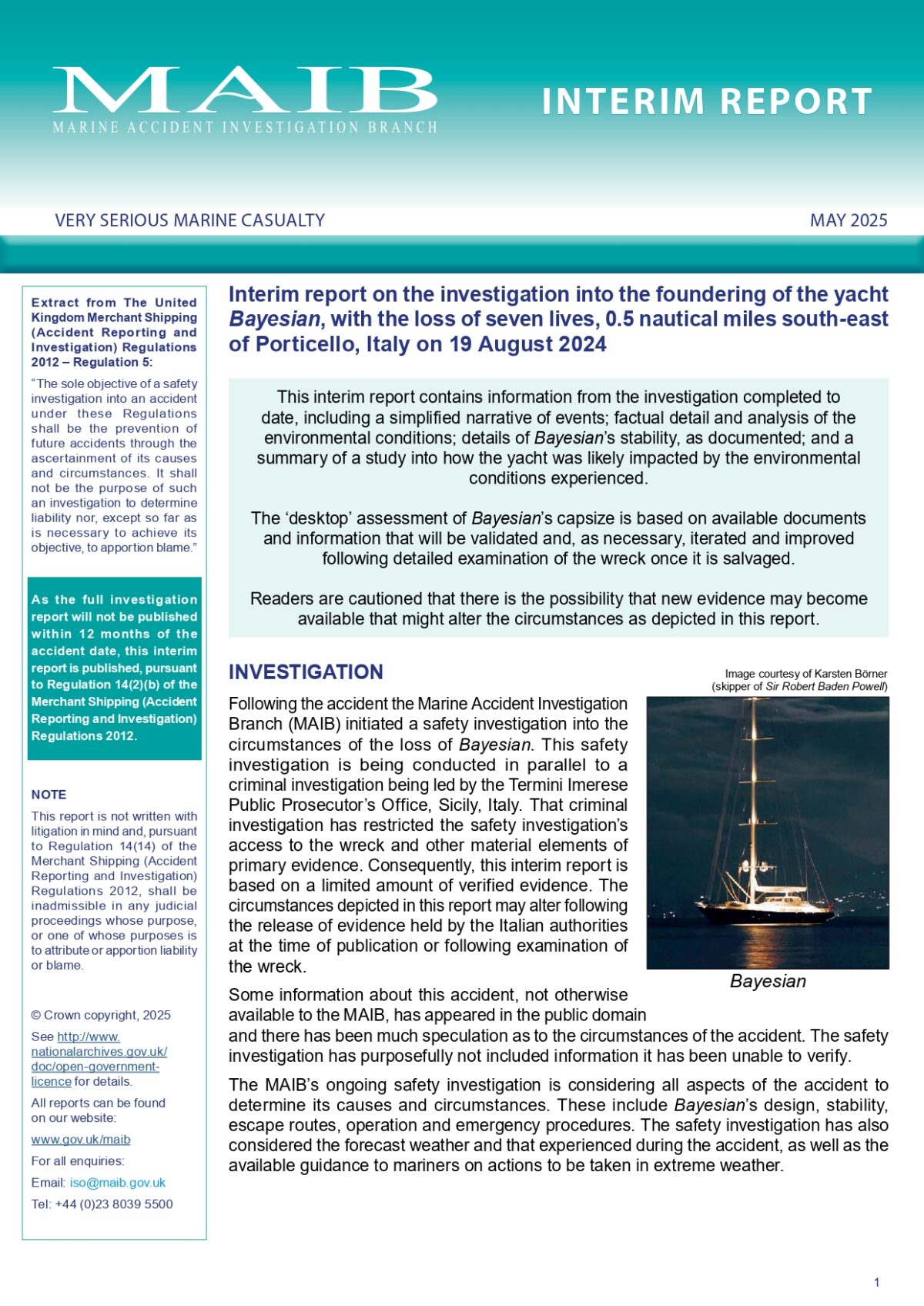In 10 pages the first analyses and findings focus on the structural conditions of the hull which could not have withstood an inclination greater than 70°
The Bayesian, which sank last August 19th while it was along the Sicilian coast at anchor in Porticello, could have sunk because it was not structurally able to withstand the violent wind conditons that hit it that night.
Vulnerable to violent atmospheric phenomena
This is what emerges from the first findings published by the British agency Marine Accident Investigation (MAIB) Branch, which is investigating the sinking of the super sailing yacht Bayesian in parallel with the Italian judiciary and which therefore highlights the fact that the boat was somehow vulnerable to violent atmospheric phenomena, pointing the finger at possible design defects of the hull built in Italy and launched in 2008 in Viareggio by Perini Navi.
The summary of findings
The summary of findings states: “The investigation established the chronology of events on board the Bayesian and documented them to the extent possible with the information collected.
The first and still provisional hypotheses
These, in more detail, are the first and still provisional hypotheses: “The effects of wind on the mast, boom, rigging and upper parts of the Bayesian were assessed using available information on the construction and equipment of the yacht
The assumed sinking condition

Related : Bayesian tragedy : Investigation of Mike Lynch yacht sinking
Through a ‘desktop’ assessment, the safety investigation established that, in the assumed sinking condition, once the Bayesian had heeled over at an angle greater than 70.6° (the vanishing stability angle) there was no possibility for the keel to return to a regular position.
The investigation also established
The investigation also established that, in the assumed loss condition, a wind speed greater than 63.4 knots on the beam was sufficient to cause the hull to heel. It is possible that the Bayesian was equally vulnerable to winds less than 63.4 knots. These vulnerabilities (in power sailing conditions with sails furled, centreboard raised and 10% consumables on board) were not identified in the stability information manual present on board.
Vulnerabilities were not known
Consequently, these vulnerabilities were not known to either the owner or the crew of the Bayesian”. A thesis that evidently, if confirmed, could play in favor of both the crew and the management of the yacht.
The Marine Accident Investigation Branch investigation then further specifies: “The Met Office study and local observations indicated the probable presence of transient hurricane-force winds well in excess of 64 knots at the time of the accident. These winds were sufficient to cause the Bayesian to exceed its maximum stability angle”.

The same British agency MAIB concludes by specifying that “the safety investigation into the sinking of the Bayesian is ongoing. Examination of the wreck of the yacht, once recovered, should improve the investigators’ understanding of the actual loss conditions of the yacht, including cargo, deadweight carried, flotation points and the position of the centreboard, in order to validate or improve the theoretical assessment already conducted.
A deeper understanding of the access and egress routes, internal layout and position of the life raft will enable the investigation to reach safety conclusions relating to survival. Until the completion of the investigation and publication of the final report, the contents of this interim report must be considered indicative of the circumstances of the accident”.
Source : Shipping Italy





